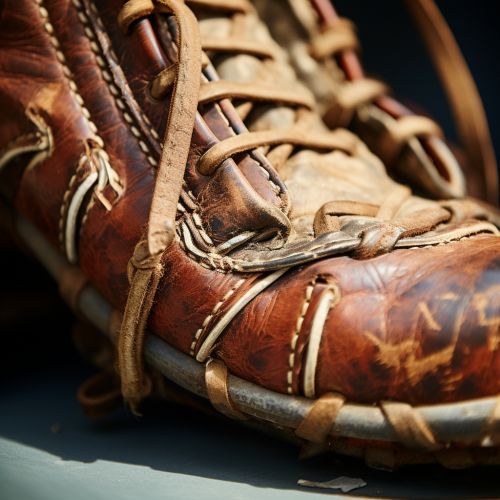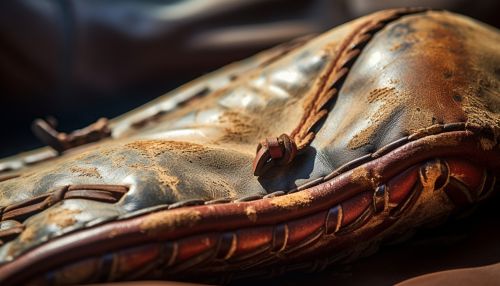Baseball glove
History
The history of the baseball glove can be traced back to the mid-19th century, when players began to experiment with gloves as a means of protecting their hands. The first players to use gloves were often ridiculed and teased as being too soft or afraid of the ball. However, as the game evolved and became more competitive, the benefits of using a glove became apparent. The first patent for a baseball glove was issued to George Rawlings in 1885. His design featured a padded leather glove with a web between the thumb and forefinger. This design was the precursor to the modern baseball glove, and its basic form is still used today.


Design and Construction
The design and construction of a baseball glove is a complex process that requires a high level of skill and craftsmanship. The process begins with the selection of the leather, which is typically cowhide, but can also be made from pigskin, kangaroo skin, or synthetic materials. The leather is then cut into the various parts of the glove, including the palm, back, fingers, and web. These pieces are then sewn together using a strong, durable thread. The glove is then shaped and formed using a process known as "breaking in". This involves repeatedly bending and flexing the glove to soften the leather and mold it to the shape of the player's hand.
Types of Gloves
There are several different types of baseball gloves, each designed for a specific position or role on the field.
- Pitcher's gloves are typically larger and have a closed web to hide the ball from the batter.
- Catcher's mitts are heavily padded and have a claw-like shape to help catch fast pitches.
- First baseman's mitts are longer and have a wider web to help scoop up ground balls.
- Infielder's gloves are smaller and have a shallow pocket for quick ball retrieval and throw.
- Outfielder's gloves are larger and have a deep pocket to catch fly balls.
Maintenance and Care
Proper maintenance and care of a baseball glove can significantly extend its lifespan. This includes regular cleaning and conditioning of the leather to prevent it from drying out and cracking. It also includes storing the glove in a cool, dry place to prevent mold and mildew. Some players also recommend wrapping the glove with a baseball or softball when not in use to help maintain its shape.
Impact on the Game
The introduction of the baseball glove has had a significant impact on the game of baseball. It has allowed players to make more difficult plays and has increased the overall level of play. It has also reduced the risk of injury, particularly to the hands and fingers. Despite these benefits, the use of gloves has also been a source of controversy, with some purists arguing that it has taken away from the skill and toughness required to play the game.
